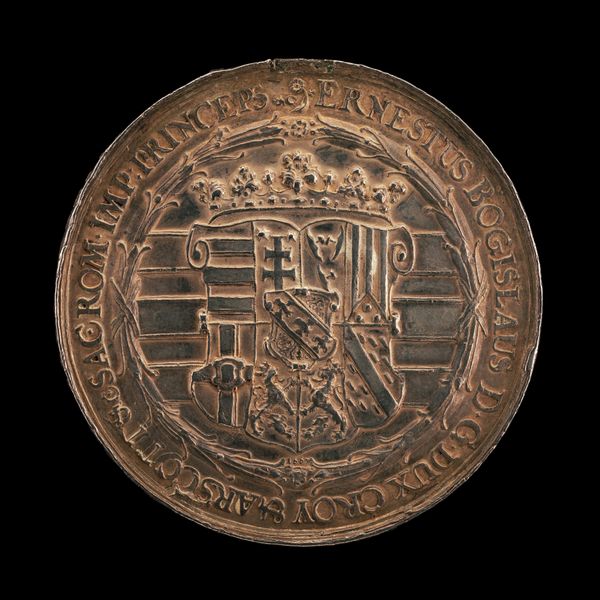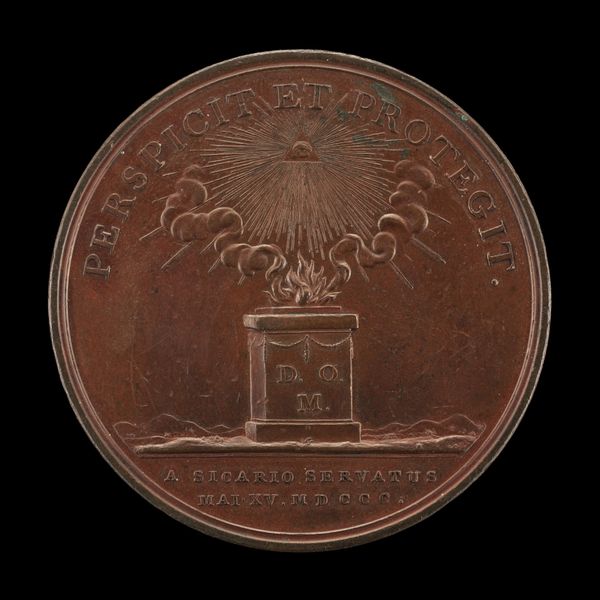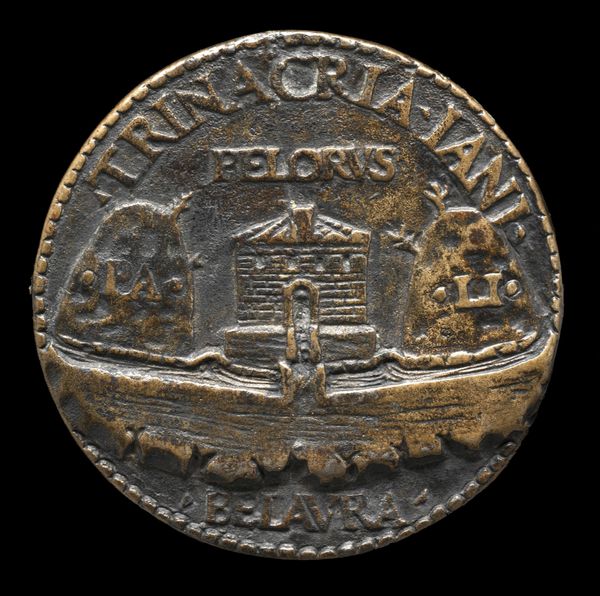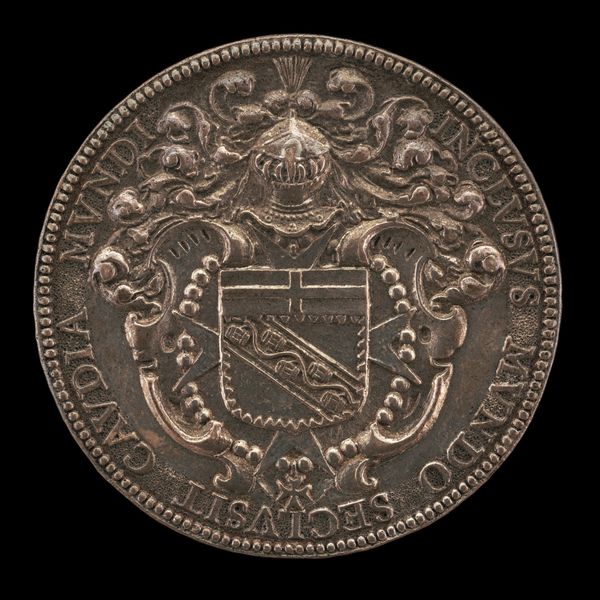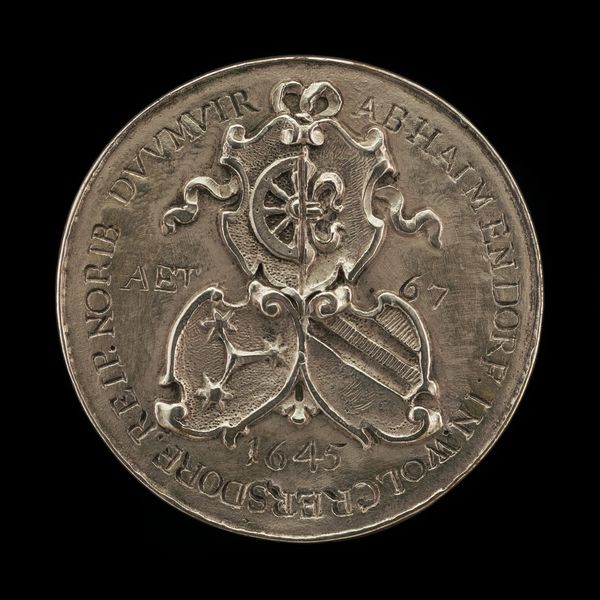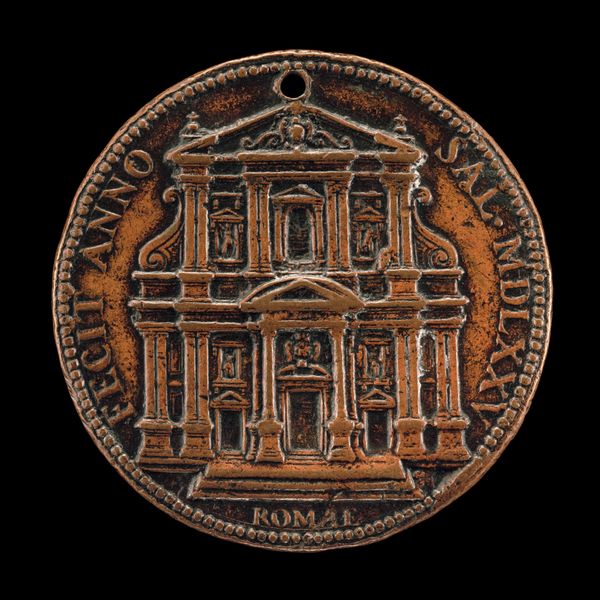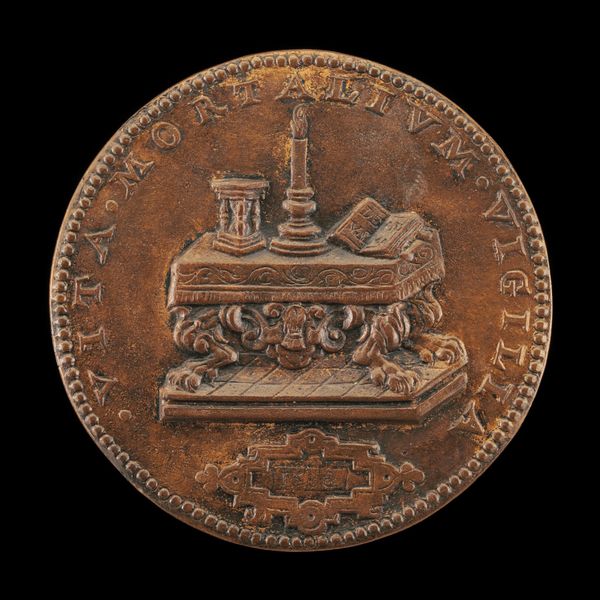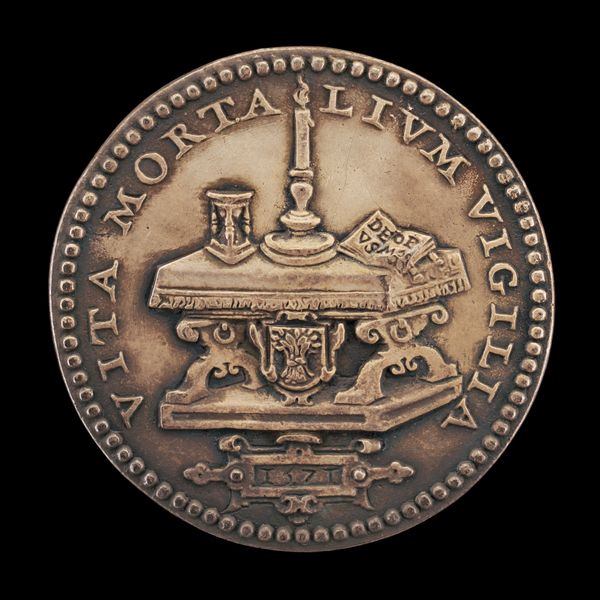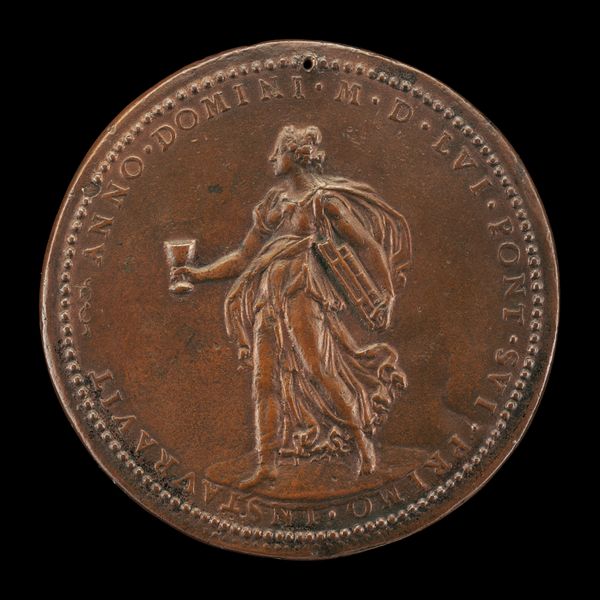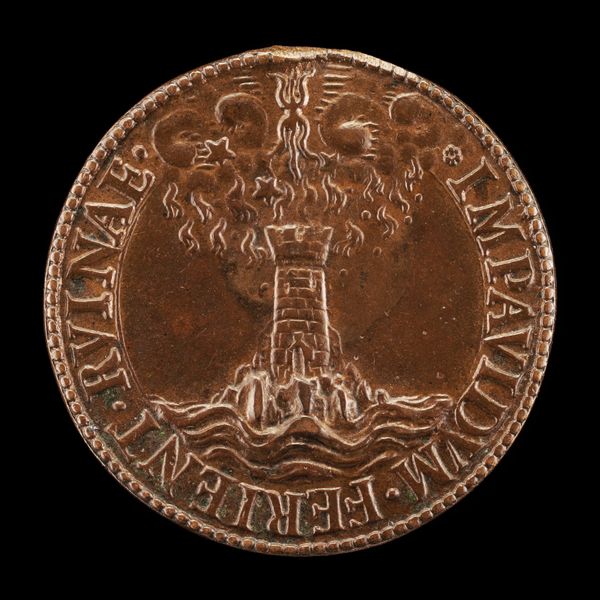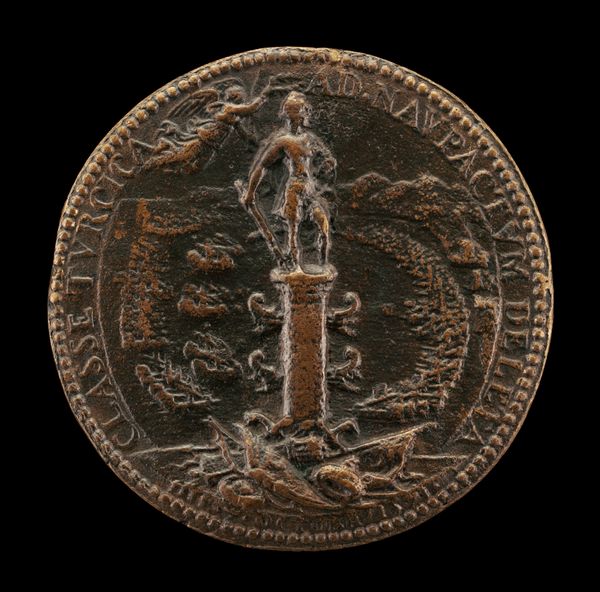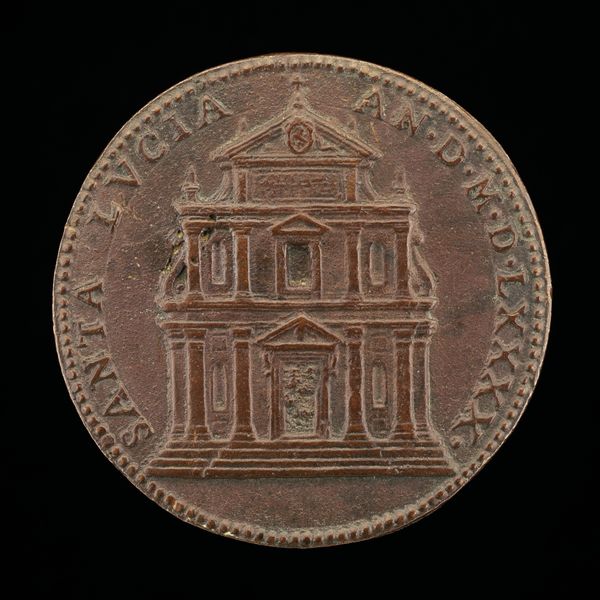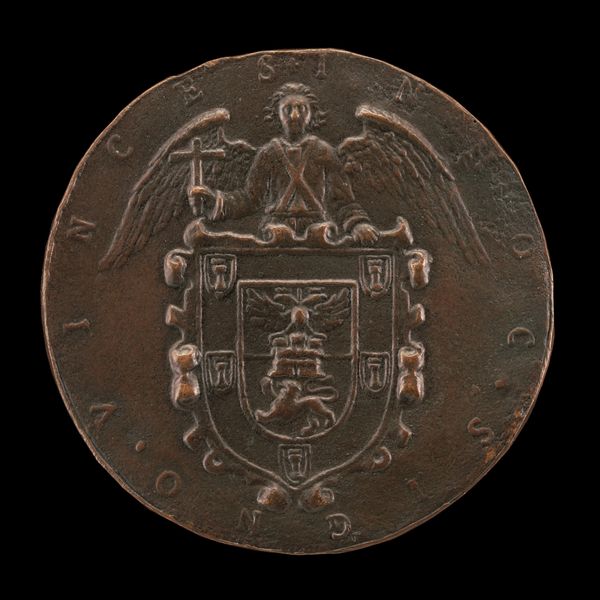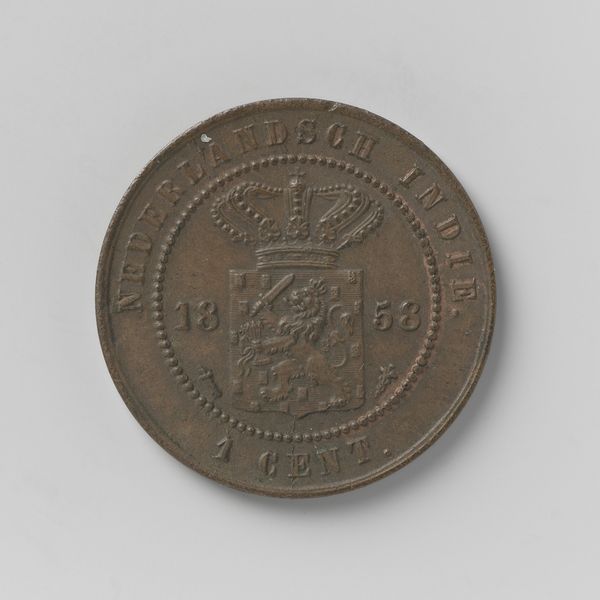![Entrance Portal of the Cappella Paolina [reverse] by Giacomo Antonio Moro](/_next/image?url=https%3A%2F%2Fd2w8kbdekdi1gv.cloudfront.net%2FeyJidWNrZXQiOiAiYXJ0ZXJhLWltYWdlcy1idWNrZXQiLCAia2V5IjogImFydHdvcmtzLzNjNDUyMGE2LWQ1M2UtNDA4OS1iMDg3LWFjMjcyNzUxYTc0YS8zYzQ1MjBhNi1kNTNlLTQwODktYjA4Ny1hYzI3Mjc1MWE3NGFfZnVsbC5qcGciLCAiZWRpdHMiOiB7InJlc2l6ZSI6IHsid2lkdGgiOiAxOTIwLCAiaGVpZ2h0IjogMTkyMCwgImZpdCI6ICJpbnNpZGUifX19&w=3840&q=75)
relief, bronze, sculpture, engraving
#
medal
#
natural stone pattern
#
sculpture
#
relief
#
bronze
#
11_renaissance
#
sculpture
#
history-painting
#
italian-renaissance
#
engraving
Dimensions: overall (diameter): 3.9 cm (1 9/16 in.) gross weight: 30.79 gr (0.068 lb.) axis: 12:00
Copyright: National Gallery of Art: CC0 1.0
Curator: This bronze relief presents the "Entrance Portal of the Cappella Paolina" dating back to 1619, crafted by Giacomo Antonio Moro. It's remarkable how much detail he packed into such a small space! Editor: Absolutely, the density is what immediately strikes me. There's a clear sense of authority and restricted access here; a powerful architectural facade condensed within a circular format. It evokes the tension between public display and enclosed power. Curator: And the symbolic weight is significant. The architectural structure dominating the composition serves not merely as a backdrop but also functions as a representation of the Catholic Church’s temporal and spiritual power during that era. Editor: The inscription bordering the image really locks it in, emphasizing the dominance and territory. Consider the political dynamics of the period; these choices create an assertive message on a currency-like object. What's that scene depicted above the doorway? Curator: Yes, it reads "SACEL[L]VM IN PALATIO QVIRIN," placing this chapel firmly within the Quirinal Palace. That relief above the door depicts the laying of the chapel’s cornerstone, symbolizing the act of establishing and grounding power, visually encoding this claim for posterity. It uses visual shorthand to signify legitimacy and the permanence of institutions. Editor: So it’s less about a devotional experience and more about the act of consecration, claiming both physical and ideological space. And there’s something fascinating about immortalizing a doorway – thresholds and boundaries take on immense symbolic weight. Whose narratives are enshrined here and whose are excluded? Curator: Exactly. A door is more than an entry point; it controls access and shapes narratives. The use of the Italian Renaissance style, with its classical motifs and emphasis on order and symmetry, is intentionally invoking the glory and stability of that period to further legitimize the chapel and, by extension, the papacy. Editor: Which prompts the question: what specific societal narratives did the Papal state wish to reinforce, especially in the face of emerging secular powers and societal fractures? Curator: This piece serves as a powerful, albeit subtle, articulation of dominance and faith, solidifying both institutional power and spiritual authority within a period rife with transitions and growing divisions. Editor: Looking closely has definitely shed new light on how physical structures, even in miniature, perform such complex roles. Curator: I concur. Visual analysis really reveals a depth beyond the mere surface, doesn’t it?
Comments
No comments
Be the first to comment and join the conversation on the ultimate creative platform.
